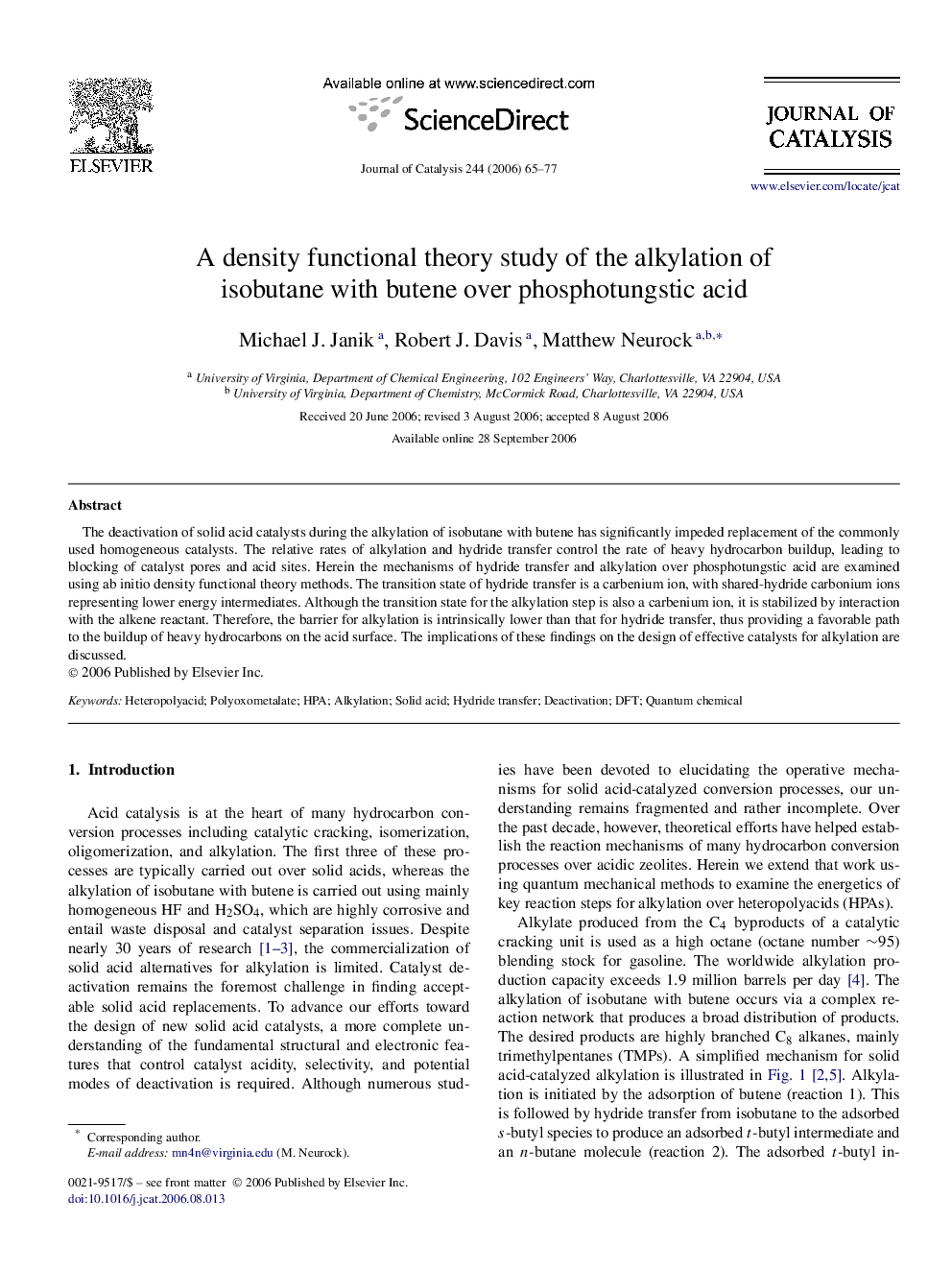| Article ID | Journal | Published Year | Pages | File Type |
|---|---|---|---|---|
| 62991 | Journal of Catalysis | 2006 | 13 Pages |
The deactivation of solid acid catalysts during the alkylation of isobutane with butene has significantly impeded replacement of the commonly used homogeneous catalysts. The relative rates of alkylation and hydride transfer control the rate of heavy hydrocarbon buildup, leading to blocking of catalyst pores and acid sites. Herein the mechanisms of hydride transfer and alkylation over phosphotungstic acid are examined using ab initio density functional theory methods. The transition state of hydride transfer is a carbenium ion, with shared-hydride carbonium ions representing lower energy intermediates. Although the transition state for the alkylation step is also a carbenium ion, it is stabilized by interaction with the alkene reactant. Therefore, the barrier for alkylation is intrinsically lower than that for hydride transfer, thus providing a favorable path to the buildup of heavy hydrocarbons on the acid surface. The implications of these findings on the design of effective catalysts for alkylation are discussed.
